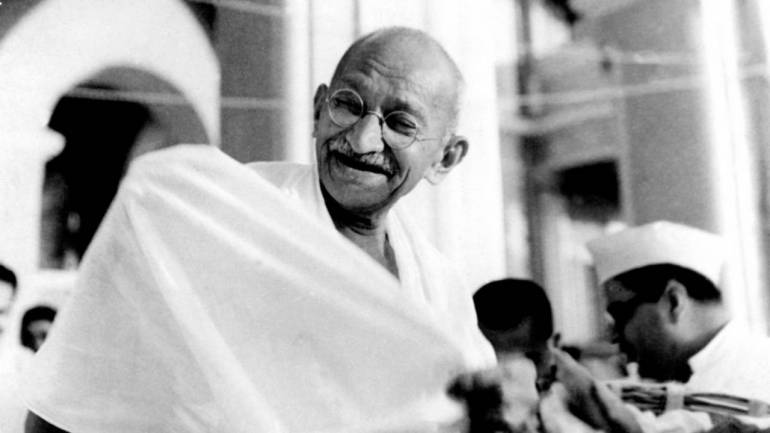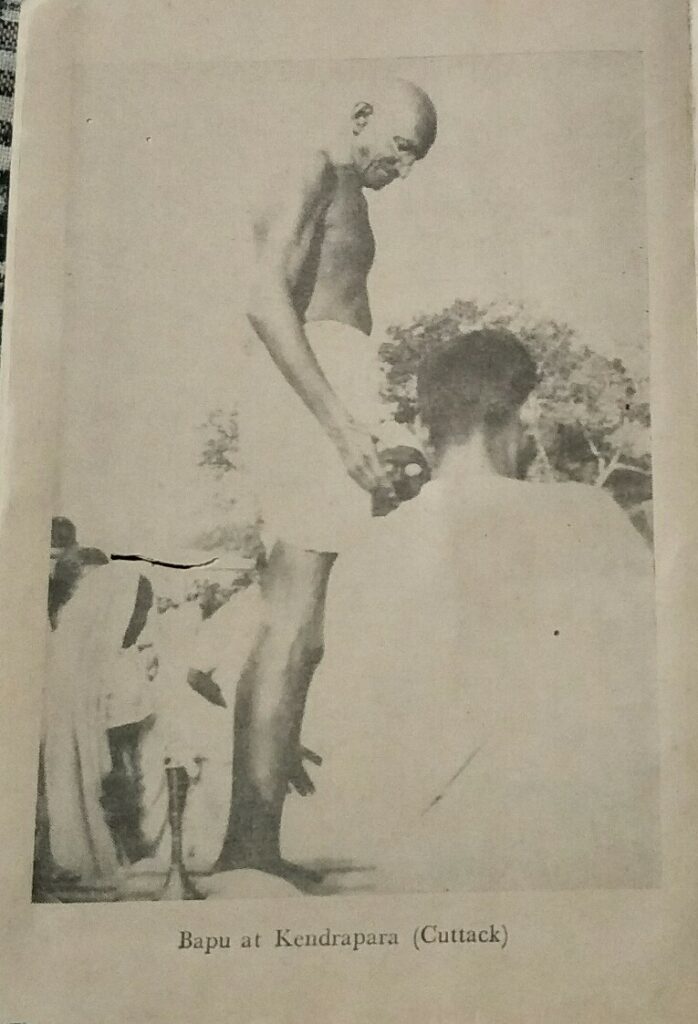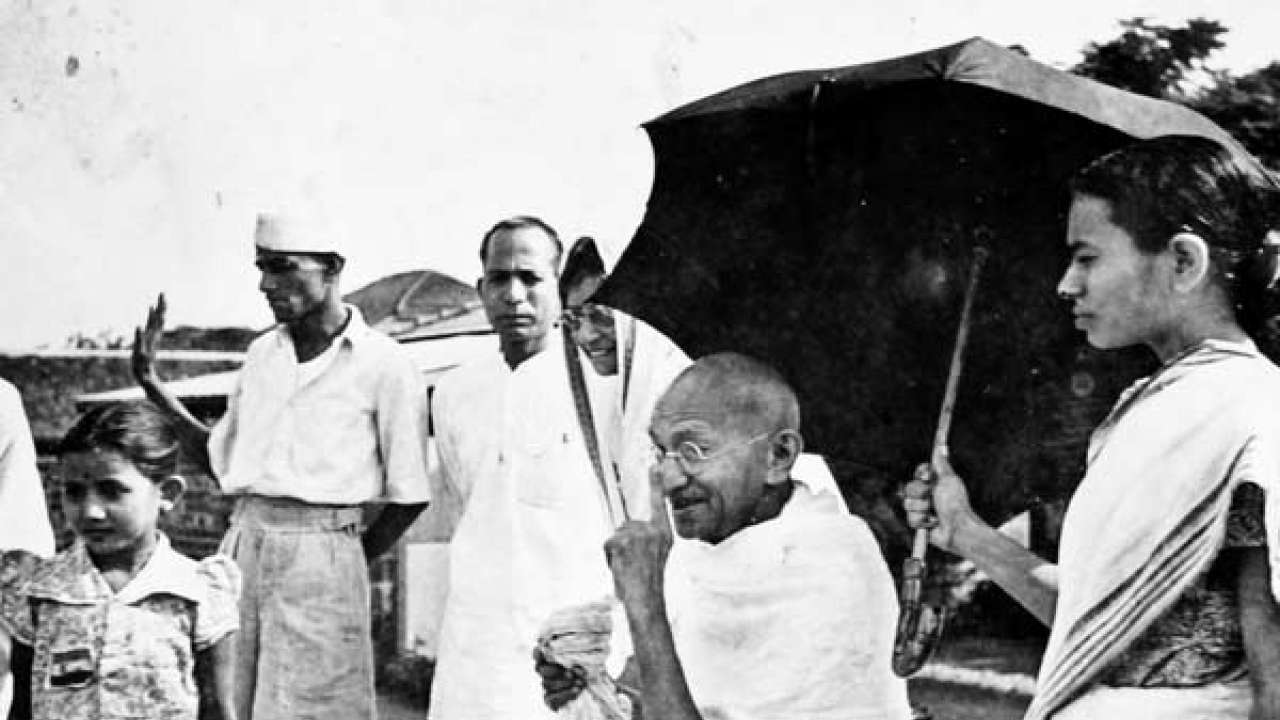Kailash Chandra Dash
Mahatma Gandhi visited Odisha seven times. In this four-part series, Kailash Chandra Dash gives an account of Gandhiji’s remarkable visits.

Gandhian philosophy and ideas were considerably appreciated in Odisha during his lifetime and even after his death. The first known article on him entitled Purusasimha Gandhi (Mahatma Mohanchand Karamchand Gandhi) with his image was presented in 1916 in Utkal Sahitya by its illustrious editor Biswanath Kar who described him as God among men (Nara Devata).
Gobinda Mishra
The brief introduction by Kar indicated his awareness of the activities of Mahatma Gandhi in South Africa as well as in India by 1916. Gobinda Mishra, a great revolutionary from Daspallastate of Odisha, was an inmate of Sabarmati Satyagraha Ashram of Mahatma Gandhi from November 18, 1918. While staying in that Ashram Gobinda Mishra had published an article entitled Bharatare Naba Jagarana (New Awakening in India) in Odia in Sambalpur Hiteisini from Bamanda in February 1919. He had presented Mahatma Gandhi and his non-violent program to the Odias in clear and cogent language. This relationship of Gobinda Mishra with Mahatma also enabled the latter to acquaint him with Odisha. It was the period when the Odias were more interested in the union of all Odia speaking areas through the powerful organisation Utkala Sammilani and then there was no strong wave of political activities affecting Odisha.
Puri Famine
During the Khilafat movement, Gopabandhu Das was the only active leader to think of an all India question. The Puri famine in 1919 made Mahatma Gandhi more concerned about Odisha and he came to know more on this province from Gobinda Mishra. According to Gobinda Mishra, he had presented before Gandhi the speech of Gopabandhu Das in Bihar Orissa Council meeting on the Puri famine and this satisfied him so much so that he sent Amritalal Thakkar (a member of Bharat Sebak Samradaya) to Puri to know about the situation. He also sent Rupees 5000 for Puri famine through Thakkar. Mahatma also presented an article on the Puri Famine in his Young India and Naba Bharat where he stated clearly that his disciple Gobinda Mishra told him about Odisha problems. In the Nagpur Congress session, Mahatma Gandhi had three minutes talk with Gopabandhu Das and therefore the Non-cooperation Movement began to spread to Odisha.
Non-cooperation
In 1920 the message of Non-cooperation of Mahatma Gandhi was well known in Odisha. In Utkal Dipika of 25th September and 20th, November of 1920 two important articles in English on Non-cooperation were published. During that time in ‘Asha’ and ’Samaj’, there was interesting debate and discourse on the Non-cooperation Movement of Mahatma Gandhi. In Utkal Dipika in the two articles, there was considerable focus on Mahatma Gandhi and his message of non-violent Satyagraha. On his message of Non-cooperation the Utkala Dipika of 20th November 1920, there was an interesting remark. According to this report-“non-cooperation has come as a tremendous boon and is called a powerful weapon which is going to prove formidable as its propaganda operation starts. It has spread already.

First visit
Mahatma Gandhi for the first time came to Odisha on 22nd March 1921. His visit was necessary for the spread of non-cooperation message in Odisha. He remained in Odisha for 8 days and spread his message of Satyagraha and non-cooperation in Cuttack, Puri, Balasore, and Ganjam. On March 23rd he addressed a huge audience in Kathjori sand zone in Cuttack. He addressed the public in Cuttack on 24th March, in Bhadrak on 25th March and after delivering his address at Bhadrak on March 25th he came to take rest in Puri Golakothi thorough Sakhigopal on 26th March. On March 27 he addressed the women in Puri in a women conference. On that day, he also addressed a big gathering of people at Gundicha mandira in Puri. He remained in Puri on 28th and 29th March and left for Brahmapur. He also addressed the great gathering of people on 29th March and left to Andhra Pradesh on 30th March for attending the All India Congress Committee Meeting at Bejwada (Vijayawada).
Tilak Swaraj Fund
The purpose of this meeting was to collect more men and women for Congress membership and the collection of one crore of rupees for Tilak Swaraj Fund by June 30, 1921. Odisha`s share was three lakhs of Congress members and three lakhs of rupees for Tilak Swaraj Fund. This amount was to be shared by all the districts of Odisha.
Unprecedented Awakening
After this visit by Mahatma Gandhi in 1921, there was an unprecedented awakening in the rural and urban areas of Odisha. There was a wide discussion on him and in the rural areas, his message was widespread. As an inmate of Sabarmati Satyagraha Ashram, Gobinda Mishra had published the biography of Mahatma in Odia up to 1921. By June 1921 there were three important discourses on Mahatma Gandhi in Odia language which popularized his message in Odisha. The three works were Mahatma Gandhi by Padma Charan Pattnaik of Puri which was printed in Utkal Sahitya Press Cuttack, Gandhinka Swaraj (Swaraj of Gandhi in Odia) by Chintamani Acharya which was also printed in Utkal Sahitya Press, Cuttack and Gandhi Mahatyma (in Odia Bhagavata form) by Jagabandhu Singh of Puri which was printed by Samaj Press.
Gandhi Mahatmya
The last book was proscribed by the colonial government. Police took away 40 books and the original manuscript. These three books presented Mahatma Gandhi as an extra-ordinary figure with a great mission for his country. Gandhi Mahatmya contained interesting verses on Mahatma`s early life till 1921 and its aim was to articulate Gandhian ideas before the rural uneducated Odias. Jagabandhu Singh followed a simple style by which rural world would understand Mahatma Gandhi and his messages. Besides the Gandhian literature containing the life and message of Mahatma Gandhi for the rural Odias, there was increasing space for Gandhian Satyagraha and Non-cooperation strategy in the Odia newspapers like the Utkal Dipika and Asha which stirred the masses with revolutionary ideas in 1922. In 1922 with the spread of Gandhian ideas in the rural areas Mahatma Gandhi was worshipped as an incarnation of God. In 1922 during the Ratha Yatra occasion in Brahmapur, the non-cooperators used the image of Mahatma in front of the Chariots. The Asha, an Odia newsweekly on 3rd June 1922 could not appreciate this attitude of the Congress leaders.

Gandhi was very popular in Odisha. Gandhi was presented in a poem in Odia as Gandhi Avatara who is Patitatarana(Purifier of the fallen), Aratatrana(Holder of the Spinning wheel), Daridrya Barana(Remover of Poverty) and Dayara Adhara(Source of Compassion). This deification of Gandhi led to the worship of Gandhi Thakurani, the spread of Gandhi Siddha, Gandhi Hukuma and Gandhi Mela.
Swaraj Geeta
His greatness due to his attempt to remove untouchability appeared in Swaraj Geeta which appeared in Asha of April 16, 1923. The interesting serial entitled ‘Asahayogira Atmakatha’(The Autobiography of a Non-cooperator) in Utkal Sahitya revealed the deification of Mahatma Gandhi. Later on, in 1960 it was published in a book form and the author was Kantakabi Lakshmikanta Mahapatra. The Gandhi Festival was very famous in the rural areas of Ganjam which was reported in Asha of 12th July 1923. Gandhi Thakurani Puja was widespread in the southern part of Ganjam particularly in Sorala of Ganjam.
Jayamangala Rath
Famous reformist thinker Jayamangala Rath could not appreciate this deification of Gandhi (Gandhi Thakurani Puja) though he was a great follower of Gandhian ideas in Ganjam. This worship of Gandhi was well known in Ganjam in 1924 and the Asha of October 24, 1924, stated that though it was superstitious this worship of Gandhi led to the unity and amity of all sections of the society irrespective of caste, color, and creed. Sarat Chandra Mahapatra, a non-cooperator from Ganjam in his serial entitled ‘Kangresa Karmeera Anubhuti’ (The Experience of a Congress Activist) in Asha of July 1923 presented in detail the spread and impact of Gandhian Satyagraha in Odisha.
(To Continue)
(The writer is a scholar and historian)






























Excellent article.
Many important points not metioned as he at bhadrakh spelled for the first time against British government and approved odisha claim for separate state many more things